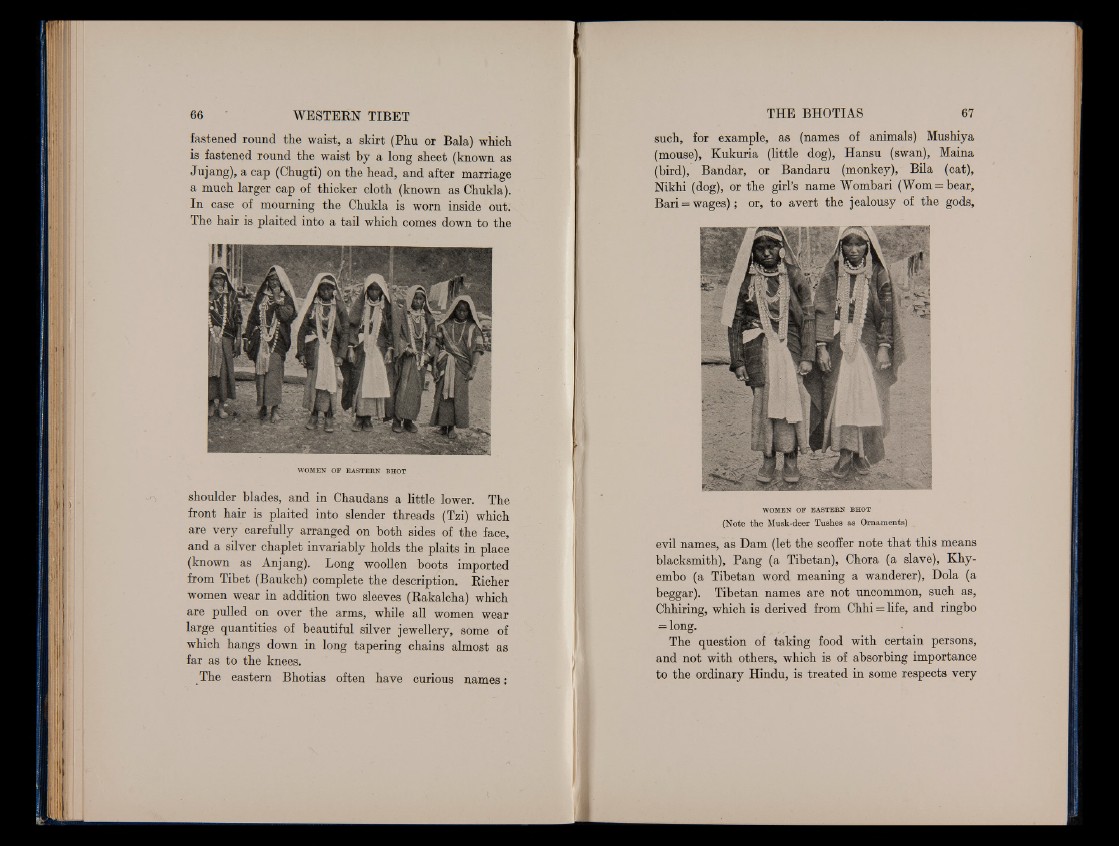
fastened round the waist, a skirt (Phu or Bala) which
is fastened round the waist by a long sheet (known as
Jujang), a cap (Chugti) on the head, and after marriage
a much larger cap of thicker cloth (known as Chukla).
In case of mourning the Chukla is worn inside out.
The hair is plaited into a tail which comes down to the
WOMEN OF EASTERN BHOT
shoulder blades, and in Chaudans a little lower. The
front hair is plaited into slender threads (Tzi) which
are very carefully arranged on both sides of the face,
and a silver chaplet invariably holds the plaits in place
(known as Anjang). Long woollen boots imported
from Tibet (Baukch) complete the description. Richer
women wear in addition two sleeves (Rakalcha) which
are pulled on over the arms, while all women wear
large quantities of beautiful silver jewellery, some of
which hangs down in long tapering chains almost as
far as to the knees.
The eastern Bhotias often have curious names :
such, for example, as (names of animals) Mushiya
(mouse), Kukuria (little dog), Hansu (swan), Maina
(bird), Bandar, or Bandaru (monkey), Bila (cat),
Nikhi (dog), or the girl’s name Wombari (Worn = bear,
Bari = wages); or, to avert the jealousy of the gods,
WOMEN OF EASTERN BHOT
(Note the Musk-deer Tushes as Ornaments) .
evil names, as Dam (let the scoffer note that this means
blacksmith), Pang (a Tibetan), Chora (a slave), Khy-
embo (a Tibetan word meaning a wanderer), Dola (a
beggar). Tibetan names are not uncommon, such as,
Chhiring, which is derived from Chhi = life, and ringbo
= long-
The question of taking food with certain persons,
and not with others, which is of absorbing importance
to the ordinary Hindu, is treated in some respects very